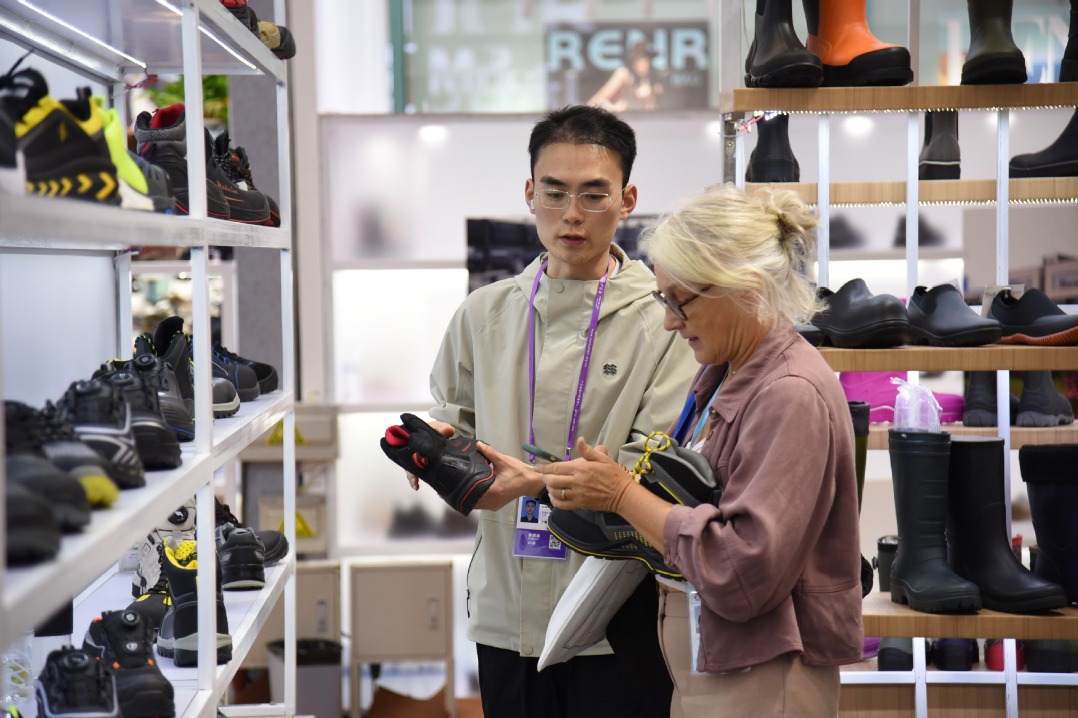Young powering cross-border e-commerce sector


China's cross-border e-commerce sector has witnessed rapid growth, as the country's young consumers logged increasing demand for high-quality diversified and personalized overseas products amid strong consumption upgrade, industry experts said.
Although orders from cross-border online shopping are still mainly from first-tier cities, residents living in lower-tier cities have displayed rapidly growing purchasing power, a report jointly released by Amazon Global Store and Baidu said.
The report said the post-90s generation is emerging as mainstream consumers and cross-border online shoppers are clearly becoming younger. The proportion of the post-90s users among overall cross-border online shoppers kept increasing in the past few years.
The report said young users around the age of 25 mainly consume to satisfy their own interests and hobbies, while those aged over 45 pay more attention to quality and are willing to buy brand clothes and healthy food.
The "stay-at-home economy" has activated more consumption scenarios and needs, and shopping for health and quality of life has become the new norm, said Li Yanchuan, head of the China Global Store and Prime, Amazon. "Beauty, personal care and clothing have been the most popular categories among consumers in cross-border online shopping."
Moreover, products like tableware and kitchen utensils, small home appliances and gardening tools are very popular, Li said. For example, Tefal frying pans, DeLonghi coffee makers, and Koizumi study desks have gained popularity among more and more Chinese consumers.
Li said the growth of healthcare products was eye-catching due to the COVID-19 pandemic, and product categories related to outdoor activities, such as hiking jackets, tents and outdoor cooking utensils, were also welcomed by consumers.
The General Administration of Customs said the import and export volume of China's cross-border e-commerce reached 886.7 billion yuan ($139.2 billion) in the first half, up 28.6 percent year-on-year.
Chinese e-commerce giant JD said it has procured 310 billion yuan worth of imported products over the past two years.
"Among imported products on JD, cherries from Chile, cookies and milk powder from Denmark, latex products from Indonesia, bird's nest from Thailand, and Nintendo and Sony game consoles from Japan are some of the most popular imported products among Chinese consumers," said Simon Han, vice-president of JD.
The company said categories of beauty, maternal and child, as well as nutrition and health products are becoming increasingly popular among consumers. In addition, the rising categories of JD's import consumption include medical care, pet supplies, food and beverages, and personal care.
As of June 30, JD had approximately 50 bonded warehouses and overseas warehouses combined, which cover more than 500,000 square meters. It is constructing two"48-hour roads", namely the routes through which packages can be delivered internationally within 48 hours, in a bid to increase shipment of goods from overseas to China and vice versa.
"The penetration rate of cross-border e-commerce in lower-tier cities and townships has been increasing in recent years. Chinese consumers show a rising demand for diversified, personalized and niche products from abroad," said Chen Tao, an analyst with internet consultancy Analysys in Beijing.
Chen said online shopping via livestreaming videos is very popular among the post-80s and post-90s generation of consumers.
Zeng Bibo, founder and CEO of Ymatou, a Shanghai-based cross-border e-commerce platform, said overseas shopping via livestreaming services could completely and truly demonstrate detailed information of overseas products to domestic consumers and have become popular with the younger generation.
"Chinese consumers have higher requirements for high-quality and cost-effective products. It brings huge opportunities to the cross-border e-commerce industry," Zeng said, adding it is noteworthy that the post-90s generation favor niche and designer brands and are also big fans of livestreaming videos.
"With the expansion of domestic demand and advances in emerging retail technologies, China has introduced preferential policies, such as lowering import taxes and expanding the range of goods allowed to be imported," said Zhang Tianbing, head of Deloitte Asia-Pacific consumer products and retail industry. All of these have prompted a surge in cross-border e-commerce imports despite the COVID-19 pandemic, Zhang added.
"The boom in celebrity livestreaming has spurred cross-border e-commerce purchases by domestic consumers. Moreover, overseas brands are moving to cross-border e-commerce platforms as they expand their distribution channels in light of disruptions to offline retail," Zhang said.




































